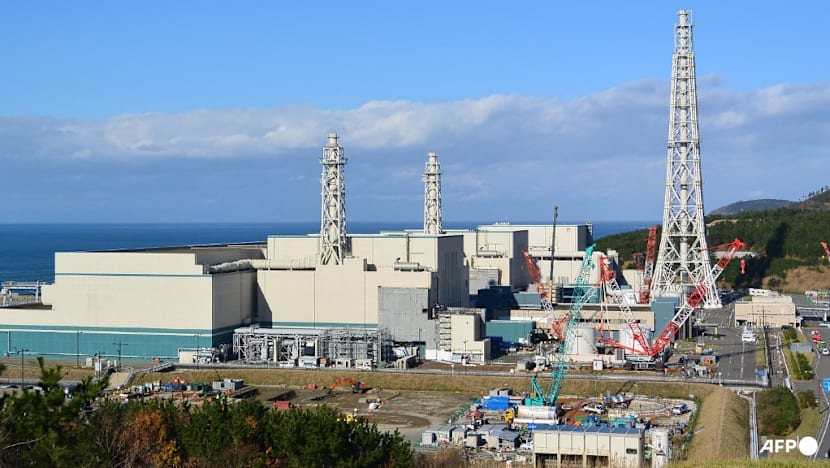World's biggest nuclear plant in Japan edges closer to restart

This photo taken on Dec 7, 2015 shows Tokyo Electric Power Company Kashiwazaki-Kariwa Nuclear Power Plant Units 6 and 7 (Units 7 and 6 from the front) in Kashiwazaki City, Niigata Prefecture. (File photo: AFP/JIJI Press)
TOKYO: Japanese local authorities approved the restart of the world's biggest nuclear plant on Friday (Nov 21) for the first time since the 2011 Fukushima disaster.
Hideyo Hanazumi, governor of Niigata province where the Kashiwazaki-Kariwa plant is located, told a news conference he "would approve" the resumption, which will need final permission by Japan's nuclear regulator.
The plant was taken offline when Japan pulled the plug on nuclear power after a colossal earthquake and tsunami sent three reactors at the Fukushima atomic plant into meltdown in 2011.
However, the resource-poor nation now wants to revive atomic energy to reduce its heavy dependence on fossil fuels, achieve carbon neutrality by 2050 and meet growing energy needs from artificial intelligence.
Fourteen reactors, mostly in western and southern regions, have resumed operation since the post-Fukushima shutdown after strict safety standards were imposed.
The 400ha Kashiwazaki-Kariwa plant on the Sea of Japan coast facing the Korean peninsula would be the first restart for Fukushima operator Tepco since the disaster.
The huge facility in central Japan has been fitted out with a 15m wall in case of tsunamis, new power backup systems on higher ground and other measures.
Before the 2011 quake and tsunami, which killed around 18,000 people, nuclear power generated about a third of Japan's electricity, with fossil fuels contributing most of the rest.
Power company Kansai Electric said in July it was taking an initial step towards building the nation's first new nuclear reactor since the Fukushima disaster.
Japan is the world's fifth-largest single-country emitter of carbon dioxide, after China, the United States, India and Russia, and is heavily dependent on imported fossil fuels.
Nearly 70 per cent of Japan's power needs in 2023 were met by power plants burning coal, gas and oil - a figure Tokyo wants to slash to 30 to 40 per cent over the next 15 years.
Almost all these fossil fuels must be imported, at a cost of around US$500 million per day.
Japan passed a law in June allowing nuclear reactors to operate beyond 60 years to compensate for stoppages caused by "unforeseeable circumstances".
It aims to make renewables its top power source by 2040.
Under the plan, nuclear power will account for around 20 per cent of Japan's energy supply by 2040 - up from 5.6 per cent in 2022.















